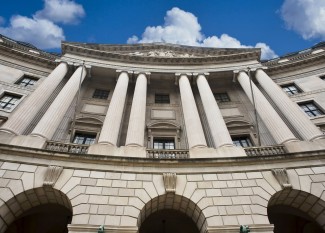When asked about the future of the ENERGY STAR program in a congressional hearing Tuesday, Environmental Protection Agency (EPA) administrator Lee Zeldin said that “this is not a statutory obligation set by Congress” and “this program is an example of one that can be run outside of the government.” In response, Steven Nadel, executive director of the American Council for an Energy-Efficient Economy (ACEEE), said:
“Congress directed the government to run the ENERGY STAR program. Until now, the EPA has implemented that statutory obligation, and it’s been an enormous success. This program saves families and businesses more than $40 billion every year with a budget of less than $40 million. It’s an astonishingly good deal. Major industry associations have rightly rejected this notion that someone else could simply pick up this program and run it as EPA has, with the decades of trust it has built with manufacturers, builders, and consumers. Congress needs to step up now and ensure that the government keeps running this remarkably effective and popular program."
Background:
In a hearing Tuesday in the Environment Subcommittee of the U.S. House of Representatives Committee on Energy and Commerce, Representative Darren Soto discussed the benefits of ENERGY STAR and asked Zeldin if he intended to ask Congress to shut it down. In response, Zeldin incorrectly claimed that the program was not required by Congress and could simply be run by a private entity.
The Energy Policy Act of 2005—passed on a bipartisan basis and signed by President George W. Bush—included a specific legal requirement for federal agencies to run the ENERGY STAR program. The law says that “responsibilities under the program shall be divided between the Department of Energy and the Environmental Protection Agency in accordance with the terms of applicable agreements between those agencies.” It directs the heads of those agencies to “regularly update Energy Star product criteria for product categories” and “work to enhance public awareness of the Energy Star label” and “preserve the integrity of the Energy Star label.”
The ENERGY STAR program helps consumers and businesses save energy. Created in 1992 by President George H.W. Bush under the authority of the Clean Air Act and expanded by subsequent administrations, the ENERGY STAR label is the mark of efficient appliances, electronics, new homes, and more. By choosing ENERGY STAR products, a typical household can save approximately $450 on its energy bills each year, according to an estimate from the Lawrence Berkeley National Laboratory. Last year alone, more than 330,000 buildings—comprising nearly 25% of all commercial building floorspace in the United States—used EPA's ENERGY STAR Portfolio Manager® tool to measure and track their energy use, water use, and waste and materials.
Many energy efficiency incentive programs—run by utilities, states, and others—use the ENERGY STAR certification to set which products are eligible for rebates. Manufacturers and retailers use it to market efficient products.
Last month, nearly 1,100 companies and organizations urged the EPA to maintain full funding and staffing levels in the ENERGY STAR program.

